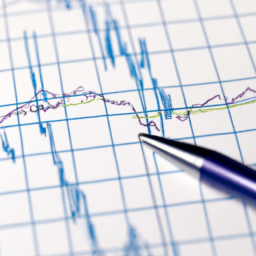
Moving Averages Analysis: An Essential Tool for Traders and Investors
Introduction to Moving Averages
Moving averages are one of the most commonly used tools in technical analysis. They help traders and investors to identify potential buying and selling opportunities by smoothing out price data and creating a line that can be used to measure trend direction and strength. The moving average (MA) is a simple, yet powerful, tool that can be used in any market, including stocks, forex, commodities, and cryptocurrencies.
Types of Moving Averages
There are several types of moving averages, each with its own strengths and weaknesses. The type of MA you choose to use will depend on your trading style, your market, and your personal preferences.
Simple Moving Average (SMA)
The Simple Moving Average (SMA) is the most basic type of moving average. It is calculated by adding up the closing prices of a security over a certain period and then dividing by the number of periods. The SMA is a lagging indicator, meaning it tends to react slowly to price changes. However, it is also very reliable and easy to use, making it a good choice for beginners.
Exponential Moving Average (EMA)
The Exponential Moving Average (EMA) is a more advanced type of moving average that gives more weight to recent price data. This makes the EMA more responsive to price changes than the SMA, but it can also make it more prone to false signals. The EMA is a popular choice among more experienced traders and investors.
Using Moving Averages in Trading
Moving averages can be used in a variety of ways to inform trading decisions. Here are some of the most common methods:
Trend Identification
Moving averages are excellent tools for identifying the direction of a market trend. If the MA line is rising, the trend is up. If it’s falling, the trend is down. This can help traders decide whether to buy or sell a security.
Support and Resistance Levels
Moving averages can also act as support and resistance levels. When the price of a security falls to a moving average line, it often bounces back up, indicating that the MA is acting as a support level. Conversely, when the price rises to a moving average line, it often falls back down, indicating that the MA is acting as a resistance level.
Crossovers
Another popular use of moving averages is to look for crossovers, which occur when the price of a security crosses above or below a moving average line. A bullish crossover occurs when the price crosses above the MA line, signaling a potential buying opportunity. A bearish crossover occurs when the price crosses below the MA line, signaling a potential selling opportunity.
Conclusion
Moving averages are a versatile and powerful tool that can greatly enhance your trading strategy. By smoothing out price data and helping to identify trends, support and resistance levels, and crossovers, moving averages can help traders and investors make more informed decisions and potentially increase their profits. However, like all technical analysis tools, moving averages should be used in conjunction with other indicators and methods to increase their effectiveness.